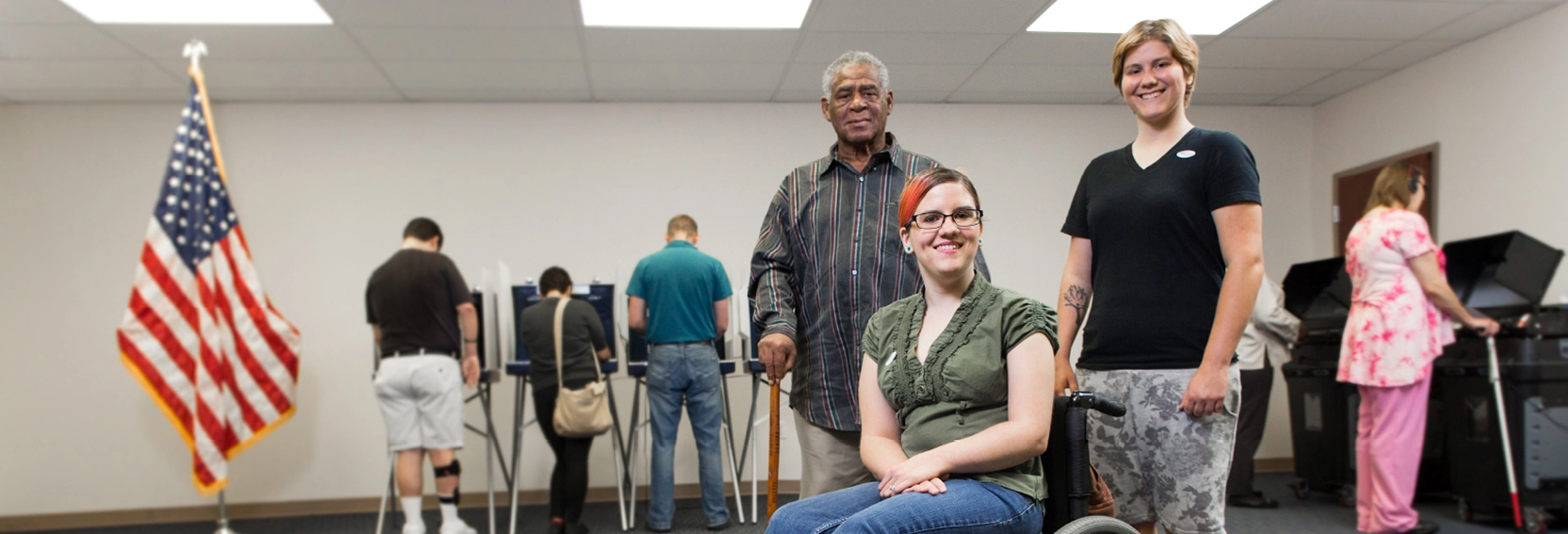Recently, there has been a campaign going around social media to try to discredit the validity of vote-by-mail ballots. On the contrary, these ballots are just as valid as the ones being cast by voters who can physically make it to the polls.
While there may be some uncertainty around the process of vote-by-mail ballots, it still is a good option to have available to voters with disabilities. Among some of the negative experiences, there are instances of individuals not being able to vote independently and having food withheld by caregivers in exchange for a specific vote. Also, it may not be the easiest thing in the world for voters with disabilities to get to their polling place. If you do not drive, you need to plan a paratransit trip, or ask a friend to give you a ride. Some voter engagement groups do offer transportation to get to polling places on Election Day, but that service is not available everywhere. This may also not be an accessible option for everyone. People who use power chairs may not have access to the service unless there is an accessible van available. Also, those offering rides may not want to transport someone who is accompanied by a service animal. If you drive or can find a friend or family member to drive you to your polling place, there is no guarantee disabled parking spots will be available once you arrive.
Although polling places are supposed to be accessible for people with disabilities, that isn’t always the case. Sometimes there isn’t enough space to move around where you cast your actual ballot. There may be so many people trying to vote at your assigned precinct that you feel rushed into voting. Vote-by-mail allows you to take your time casting your vote and gives you the ability to vote in the comfort of your own home.
Many benefits exist by utilizing this option. Among them, vote-by-mail ballots offer flexibility and accessibility to the process that wouldn’t otherwise be available. According to the Centers for Disease Control, 1 in 4 adults lives with a disability in the United States.[1] At the same time, vote-by-mail isn’t a one-size-fits-all solution for everyone with a disability. There are still needed adjustments to the program to ensure that people with all disabilities are given the opportunity to vote. Without an accessible vote-by-mail program, many voters who are blind, visually impaired, or have limited motor skills can’t use vote-by-mail in its current form. They must choose between not voting at all or going to vote in-person where they can use an accessible machine. Because of the current health crisis, they may be putting their health at-risk to exercise their right.
As a person with a disability, I feel it is extremely important that we are active participants in the election process. When we have difficulty getting needed services, our local politicians can assist us in getting the help we need. Many times, they are a source of guidance and can be the key to successfully resolving our issue.
When exercising our right to vote, it’s important to be informed voters. Websites are one way candidates share information. Increased accessibility of websites is needed so that more people can easily learn more about each candidate running for office. Sometimes candidate forums do not provide sign language interpreters at in-person events. This makes information dissemination to those with a hearing impairment difficult. The solution might be to call the candidates’ offices and let them know what would make their platform more disability-friendly. Let them know that making their materials more accessible would allow them to reach more voters. Most of all, it’s important that our voices be heard by voting on Election Day.
Voting-by-mail is the most feasible option available for many people with disabilities who want to vote and need that accommodation. Due to the current pandemic, it’s also an effective way to take care of yourself and others around you. As a result of having this option available, your ballot can be counted like everyone else who chooses to participate in the voting process. The vote-by-mail option is crucial to people exercising their right to vote. There are people with and without disabilities who have weakened immune systems. Due to the current pandemic, they shouldn’t have to put themselves at risk to vote on Election Day. Vote-by-mail allows people to participate in the election process while keeping themselves out of harm’s way.
Christinne Rudd is a disability advocate, speaker, author, and consultant. Ms. Rudd holds a Bachelor’s Degree in Legal Studies and a Master’s Degree in Criminal Justice both from the University of Central Florida. She has written for a variety of noteworthy publications such as the Huffington Post, The National Center for Health Activity and Physical Disability, Mobile Women and the Disabled Parenting Project among others.
